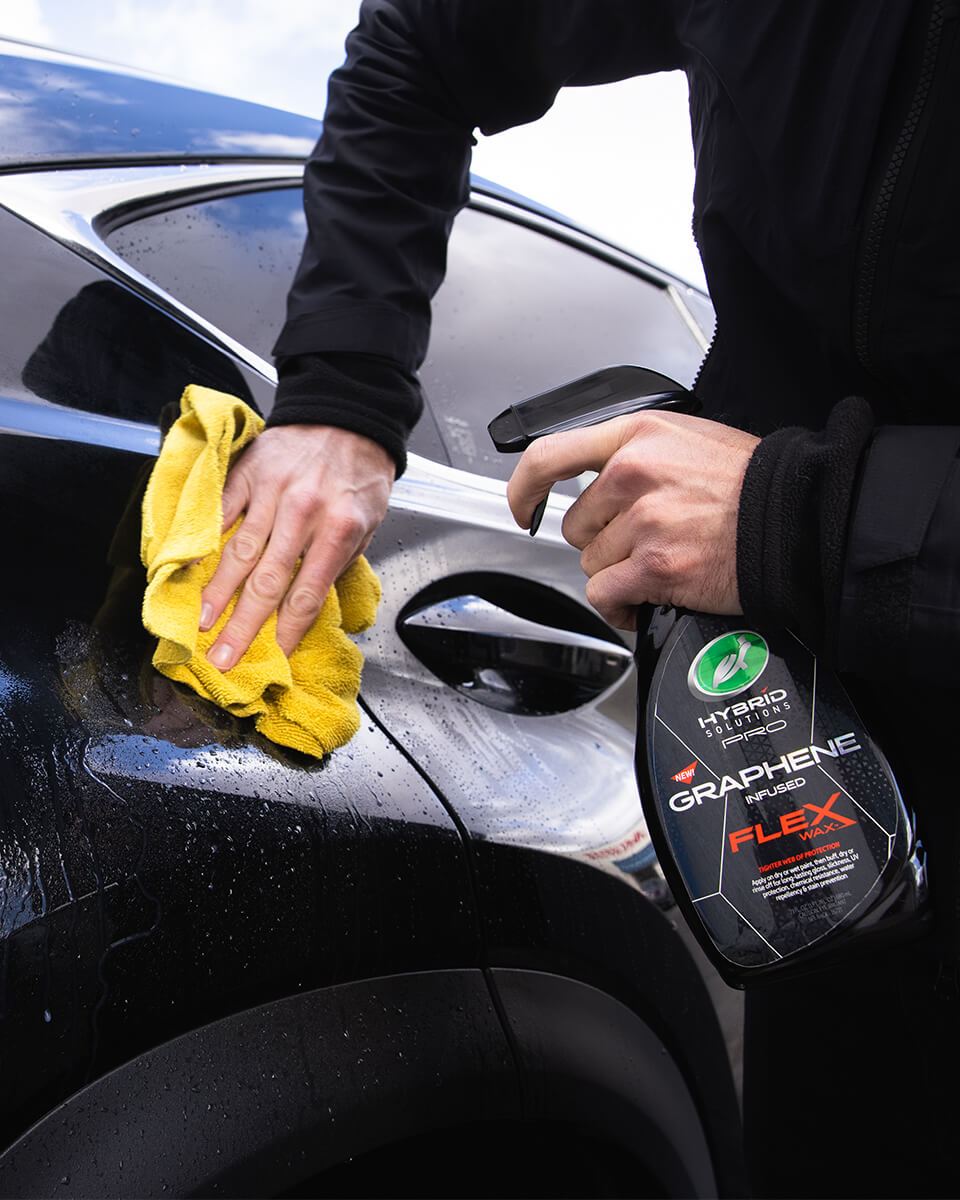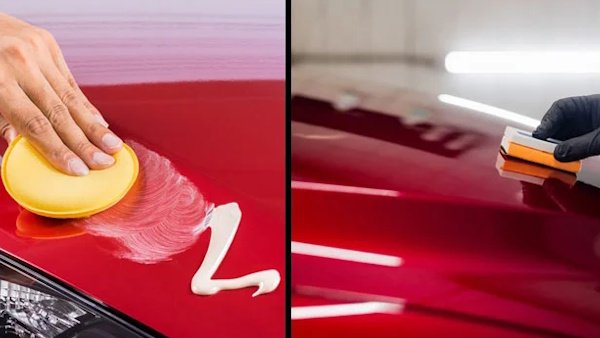A buyer’s guide to finding affordable Ceramic Coating Newark
Wiki Article
Exploring the Scientific Research Behind Car Ceramic Coating and Its Safety Properties
The scientific research of car ceramic coating provides an interesting study in innovative auto defense. Composed mainly of silicon dioxide and polymers, these finishes create a durable bond with lorry paint. This interaction enhances longevity against environmental hazards while offering hydrophobic benefits. Nevertheless, the intricacies of just how these finishes job and their long-lasting benefits continue to be much less comprehended. Unpacking these details exposes why ceramic coverings are becoming a recommended option for vehicle careWhat Is Ceramic Coating?
Ceramic coating is a fluid polymer that chemically bonds to the surface of a car's paint. This innovative protective layer enhances durability and uses remarkable resistance to ecological factors. Unlike conventional wax or sealants, which give short-lived protection, ceramic finishes develop a durable guard that can endure harsh conditions such as UV rays, acidic contaminants, and severe weather condition. When applied appropriately, the coating develops a hydrophobic surface area, triggering water to bead and slide off, which aids in preserving the lorry's tidiness. Additionally, it provides boosted gloss and depth to the paint, making the lorry show up even more refined and vivid. The application procedure generally includes detailed surface area prep work, consisting of cleansing and polishing, to assure peak bonding. As a result, ceramic coatings are ending up being increasingly popular amongst car lovers and those looking for to secure their investments, promising to preserve the vehicle's aesthetic charm while reducing the regularity of maintenance.The Composition of Ceramic Coatings
The elaborate formula of ceramic finishes mostly is composed of silicon dioxide (SiO2), which is stemmed from natural sources like quartz and sand. This vital component supplies the structure for the coating's resilience and safety qualities. Along with SiO2, ceramic finishes typically include numerous polymers and additives that enhance bond, flexibility, and resistance to ecological elements. These substances function synergistically to create a durable barrier versus impurities such as dust, chemicals, and UV rays.Furthermore, some formulas incorporate titanium dioxide (TiO2) or various other nanomaterials, which can increase the coating's hydrophobic properties, resulting in improved water repellency. The accurate make-up can vary greatly amongst makers, affecting efficiency and long life. Inevitably, the combination of these components finishes in a protective layer that not just improves the aesthetic appeal of cars but additionally serves to prolong their lifespan by shielding the surface from prospective damage.Just How Ceramic Coatings Job
Recognizing just how ceramic finishings function involves discovering their chemical make-up, which contributes to their safety high qualities. The application process is essential for accomplishing excellent outcomes, while long life and durability variables establish the coating's efficiency gradually. Together, these components highlight the benefits and performance of ceramic layers for car defense.Chemical Make-up Explained
While numerous car owners look for lasting protection for their vehicles, the chemical structure of ceramic finishings plays a vital function in their effectiveness. These finishings mostly are composed of silicon dioxide (SiO2), which is originated from natural minerals. This compound creates a solid bond with the vehicle's paint, creating a sturdy, safety layer. Additionally, numerous ceramic finishes contain titanium dioxide (TiO2), improving their hydrophobic residential properties and resistance to UV rays. The presence of polysiloxanes can better enhance adaptability and longevity. With each other, these elements contribute to the coating's capacity to drive away water, dirt, and contaminants, while additionally offering a high-gloss coating. Comprehending this chemical foundation aids car proprietors value the robust protection offered by ceramic finishings.Application Process Overview
Using ceramic finishes includes a thorough process that ensures suitable bonding and defense for the car's surface. Originally, detailed cleansing and decontamination of the car's exterior are performed to get rid of dust, grime, and previous waxes. This action confirms that the surface is without contaminations that could prevent attachment. Following this, the paint is typically brightened to enhance clearness and eliminate any type of blemishes. As soon as prepared, the ceramic coating is applied in little areas utilizing an applicator pad, allowing for uniform insurance coverage. The coating is then entrusted to treat, creating a strong chemical bond with the surface. Correct curing times and problems are essential, as they validate the coating attains its optimum effectiveness and protective qualities.Longevity and Resilience Aspects
Ceramic finishes are check here made to offer lasting security with their sophisticated chemical structure, which produces a durable obstacle against ecological contaminants. The toughness of these coatings is influenced by aspects such as the thickness of the application, the high quality of the product, and the conditions under which the vehicle is subjected. Premium ceramic finishings can last a number of years, withstanding scratches, UV rays, and chemical spots. Proper maintenance, including regular cleaning and routine reapplication, can additionally enhance long life. Furthermore, environmental elements like climate and exposure to toxins can impact the life expectancy of the coating. On the whole, when applied and maintained correctly, ceramic finishes supply outstanding resilience, making them a prominent selection for car enthusiasts looking for to preserve their vehicle's look.Hydrophobic Properties and Water Repellency
Hydrophobic properties are a characteristic of high quality car ceramic coverings, significantly improving the automobile's surface area efficiency. These coverings develop a molecular bond with the car's paint, causing a surface that repels water successfully. When water comes right into contact with a ceramic-coated surface area, it grains up and rolls off, lessening the quantity of liquid that stays on the paint. This actions not only contributes to go to this site an aesthetically pleasing appearance but also lowers the accumulation of impurities such as dirt, crud, and road salts.The improved water repellency causes less complicated cleansing and maintenance, as much less initiative is needed to get rid of undesirable compounds. On top of that, the hydrophobic nature of ceramic coverings aids in preventing water areas, which can mar the coating of uncoated surface areas. Generally, the incorporation of hydrophobic residential properties in ceramic layers plays an essential duty in keeping the lorry's pristine look while simplifying upkeep.Security Versus Scratches and UV Damages
Car ceramic coverings offer significant security versus scratches and UV damage. The scrape resistance device creates a sturdy layer that soaks up influences, while the UV shielding advantages assist preserve the car's paint integrity in time. Together, these features contribute to a longer-lasting and aesthetically attractive finish.Damage Resistance System
Utilizing advanced technology, ceramic coatings provide a robust guard against scrapes and UV damage, boosting the durability and appearance of vehicle surface areas. The scrape resistance device of these layers is credited to their one-of-a-kind molecular framework, which creates a resilient bond with the lorry's paint. This bond creates a hard, safety layer that can take in influences and stand up to abrasions. Furthermore, the smooth surface area of the coating lowers friction, making it difficult for contaminants to stick and create scrapes. The chemical structure of ceramic layers typically consists of nanoparticles that reinforce the protective layer, more enhancing its resilience. Vehicles treated with ceramic coverings exhibit noticeably boosted scratch resistance compared to typical wax or sealants, ensuring an immaculate finish over time.UV Shielding Advantages
The safety high qualities of ceramic layers expand past scratch resistance to include significant UV securing benefits. These coatings produce a durable barrier that mirrors dangerous ultraviolet rays, protecting the lorry's paint and underlying materials. Prolonged direct exposure to UV radiation can bring about fading, oxidation, and wear and tear of the paint surface. By incorporating ceramic coatings, car owners can successfully minimize these risks, protecting the aesthetic allure and integrity of their autos. In addition, the UV blocking buildings add to improved longevity, reducing the regularity of painting and maintenance. Inevitably, the combination of ceramic finishings provides an extensive service for protecting vehicles from the destructive effects of sunlight exposure, making sure a sustained, dynamic look in time.The Longevity and Maintenance of Ceramic Coatings

Frequently Asked Questions
see this pageCan Ceramic Coating Be Applied to Any Type Of Kind Of Lorry?
Ceramic coating can be put on numerous kinds of vehicles, including cars and trucks, trucks, and motorbikes. Surface prep work and compatibility with specific materials are important for optimal adhesion and performance of the coating.Just How Much Does Ceramic Coating Generally Cost?
Ceramic coating normally costs in between $500 and $2,000, depending on elements such as lorry size, coating top quality, and specialist application. The investment can offer long-lasting security and boost the car's appearance with time.
Is Professional Application Essential for Finest Results?
The requirement of professional application often relies on desired results. Experts generally assure correct surface area prep work and application techniques, bring about perfect bonding and long life of the coating, which might be challenging for unskilled people to achieve.Can Ceramic Coatings Be Removed or Repaired?
Ceramic finishes can be removed or fixed, though the process might need particular solvents or techniques - Ceramic Coating Newark. Proper removal is important to prevent damage to the underlying surface, stressing the significance of professional help for ideal outcomesHow Does Porcelain Coating Contrast to Conventional Wax?
The comparison between ceramic coating and traditional wax discloses that ceramic finishes offer remarkable sturdiness, boosted security versus environmental impurities, and longer-lasting shine, while wax needs much more constant application and offers much less overall resistance to damages.Report this wiki page